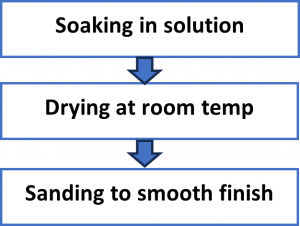In this blog, we will look at five common mistakes to avoid while writing the methodology section of your research paper. It is very important that you follow these instructions when writing your methodology section, especially if you are a beginner writer.
1. Avoid Using Vague Language
One of the common mistakes people make is using vague language in the materials and methods section. Reviewers won’t like it, and they will reject the paper on the basis that the section is not elaborate enough for other researchers to reproduce your experiments.
Look at the statement below, “The measurements were performed on the imaging unit at different settings.” It is so vague. The author mentions an equipment, he doesn’t tell you what make and model is it. Then the author talks about performing measurements at different settings, and he doesn’t tell you what those settings are? How can a researcher reproduce the experiment with this information.
✖ Bad example – Very vague: lacks specific details
The measurements were performed on the imaging unit at different settings.
Here is the same statement rewritten with all the details. Now the readers know the exact details of the equipment on which measurements were performed. They also know exactly what settings were used to perform the measurements.
✔ Good example – All the details provided for replication of the experiment
The measurements were performed on the imaging unit (Siemens mammographic unit; model:Inspiration) at different voltage settings (29V, 30V, 31V).
2. Use Past Tense
Make sure you write the materials and methods section in past tense, since you are reporting something that has already happened.
Here is an example. Look at both statements, the first statement has been written in present tense, whereas the second statement has been written in past tense. The second statement is the correct way of writing the methods section.
✖ Incorrect – Present tense
The samples are placed in the container in room temperature and then further processing is applied.
✔ Correct – Past tense
The samples were placed inside the container in room temperature and were further processed.
3. Active vs. Passive Voice
Check with your journal requirements to find out if you are required to use active or passive voice in your materials and methods. It is common to use passive voice in methods section. Here is exactly the same statement written in both active and passive voices.
Active voice – Emphasis is more on the person rather than the procedure
We placed the samples in a container at room temperature. Then we performed further processing.
Passive voice – More formal and widely used in research papers
The samples were placed inside a container at room temperature and were further processed.
You can see that statement written in passive voice sounds more formal, as you are focussing on the actual procedure rather than the person who did it. It comes down to the journal requirements and your personal preference as to how you want to tell the story. You can use a mixture of active and passive voices to make the text sound more interesting to your readers.
4. Keep It Interesting
Another problem you are likely to face is that your methods section can sound like manual if you have too much text in it. In particular, if you are dealing with a very complex procedure, the readers might find it dry and tedious. So try to provide some variety to the layout.
Try to use numbered lists instead of long paragraphs to make it easy for the readers to understand the procedure. You can use flow diagrams to illustrate the process rather than describing it.
Here is an example. Here we have described the process in a paragraph. Now let’s look at the same process presented as a numbered list and as flow diagram. You can clearly notice the difference. Lists and flow diagrams are simplifying the narrative significantly.
The sample was first prepared by soaking in the solution. Then the sample was left to dry at room temperature until all the moisture was removed from the sample. Then the surface of the samples was sanded until a smooth finish was achieved.
The process comprised of three steps: (1) sample preparation by soaking in solution; (2) drying at room temperature and (3) sanding the surface to smooth finish.

But please check with your journal requirements and check if numbered lists are allowed before including them in your manuscript.
5. Use Acronyms and Abbreviations to Shorten Text
Try to use acronyms and abbreviations for long method names. Abbreviations and acronyms are a great way to make your writing concise and save time. Define the acronyms and abbreviations during their first occurrence then use the short form in the rest of the text. The common practice is to put the acronym and abbreviations in parentheses after the full term at the first occurance.
Author defines ‘PSF’ at the first occurance, and uses the abbreviated form in the rest of the text
The Professional Standards Framework (PSF) has become a globally-recognised framework for benchmarking success within HE teaching and learning. PSF has been used widely across Uk Universities.
6. Summary
Research methodology is a way of explaining the experimental procedure to your readers. It should be written in a way that another researcher can easily reproduce your experiments and replicate your findings. We looked at five common mistakes beginner writers make while writing the methodology section and how to rectify it.
If you have any questions, please drop a comment below, and we will answer as soon as possible. For further reading, please refer to our blog on how to write the materials and methods section of a research paper? We also recommend you to refer to our other blogs on academic writing tools, academic writing resources, and academic phrase-bank, which are relevant to the topic discussed in this blog.






